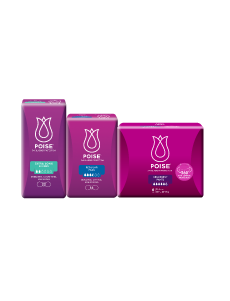5 Things to Take Note of as a Young Woman
Young women today have more sexual freedom than any generation before them. Although we have learnt so much about pregnancy, HIV, STDs, and the importance of using condoms, there will always be health issues to be aware of.
Sex with a partner brings you into contact with different bacteria, not always bad, but certainly bacteria which are foreign to our bodies. Our bodies can react negatively to these bacteria, resulting in bladder and urinary tract infections, which affects bladder control in women.
Combine these bacteria with a dehydrated body and irritated bladder from the alcohol of a fun night out, and the risk of infection dramatically increases.
Obesity, illness, constipation, and various medication can also bring on bladder loss in young women.
Be sure to talk to your doctor or health care professional as they will help you determine the cause of your bladder weakness and ways in which you can control and improve your condition.
Nutrition & Lifestyle Tips
1. It might not be sexy but…
After sexual intercourse, go to the bathroom and urinate. This flushes out the bacteria that may have been pushed into your urethra, which may prevent an infection. Properly clean the area around the urethra.
2. Food rules
Certain foods and drinks can irritate bladders. Citrus fruits, tomatoes or hot spices may have this effect on you. Try keeping a bladder diary to see which ones may be affecting your bladder weakness.
3. One glass too many
Alcohol and caffeine seem to be essentials in a career woman's life. However, not only does it dehydrate the body by making more urine, they can also irritate the bladder, making you want to urinate before you need to. Ensure you drink plenty of water, both at work and at play. A good measure is for every coffee or alcohol drink, match it with one glass of water. Your bladder (and head) will thank you for it.
4. Eat well
Eat a wide variety of nutritious foods, including fibre for a healthy bowel, protein for muscle repair and drink plenty of water (1.5 litres a day) to keep your system flushed. People who eat a variety of food are generally healthier, live longer and have a reduced risk of developing illnesses such as diabetes, which is a major cause of bladder weakness.
5. Take care, down there
Wipe from front to back after a bowel movement and wash the genital area when bathing.
Incontinence can affect women of all ages. POISE® liners and pads are specifically designed to help women easily manage bladder leakage in everyday life. Try now!
Where To Buy
These articles might also be interesting to you
Kimberly-Clark Singapore makes no warranties or representations regarding the completeness or accuracy of the information. This information should be used only as a guide and should not be relied upon as a substitute for professional medical or other health professional advice.
Sources
Arnold, J., McLeod, N., Thani-Gasalam, R. and Rachid, P. (2012). RACGP - Overactive bladder syndrome –management and treatment options. [online] Racgp.org.au. Available at:
http://www.racgp.org.au/afp/2012/november/overactive-bladder-syndrome/
[Accessed 6 Apr. 2015].
Bladderclinic.com.au, (2011). Overactive Bladder (OAB). [online] Available at:
http://www.bladderclinic.com.au/bladder/overactive-bladder-oab [Accessed 6 Apr. 2015].
Cherney, K. (2013). Home Remedies for Overactive Bladder. [online] Healthline. Available at:
http://www.healthline.com/health/overactive-bladder/home-remedies#Overview1
[Accessed 6 Apr. 2015].
Eilber, MD, K. (2015). What Is The Difference Between A Small Bladder And An .... [online] EmpowHER. Available at:
http://www.empowher.com/overactive-bladder/content/what-difference-between-small-bladder-and-overactive-bladder-dr-
[Accessed 6 Apr. 2015]
Maher, MD, C. (2003). Welcome to Chris Maher's Urogynaecology Australia Web Site. [online] Urogynaecology.com.au. Available at:
http://www.urogynaecology.com.au/Overactive.htm [Accessed 6 Apr. 2015].
Siamak N. Nabili, M. (2014). Overactive Bladder: Facts for Men, Women, and Children. [online] MedicineNet. Available at:
http://www.medicinenet.com/overactive_bladder/article.htm [Accessed 6 Apr. 2015].
Tidy, MD, C. (2013). Overactive Bladder Syndrome, Bladder Problems | Health | Patient.co.uk. [online] Patient.co.uk. Available at:
http://www.patient.co.uk/health/overactive-bladder-syndrome [Accessed 6 Apr. 2015].
Webmd.com, (2014). Overactive Bladder in Children (Child Incontinence): Signs, Causes, and Treatment. [online] Available at:
http://www.WebMD.com/urinary-incontinence-oab/overactive-bladder-in-children
[Accessed 6 Apr. 2015].
Canceraustralia.gov.au, (2019). Bladder cancer statistics in Australia | Bladder Cancer. [online] Available at:
https://bladder-cancer.canceraustralia.gov.au/statistics
[Accessed 6 Jun. 2019].
Other urinary incontinence causes








